You’ve probably heard of hot glue guns, but do you know just how powerful and effective these tools are? If you’re looking for a strong adhesive that can withstand high temperatures without dripping or running, then consider the magical properties of this device. Glue guns propose secure bonds and usually last much longer than most adhesive substances. How long can you expect your hot glue gun to remain operational after plugging it in? In this blog, we’ll explore the duration of your hot glue gun’s burning time and provide valuable insights on how to enhance its efficiency, ultimately extending its lifespan. So let’s get started!
Table of Contents
How Long Does a Hot Glue Gun Burn Last?
The burn time of a hot glue gun is influenced by several factors, such as the model of the device, the type of glue utilized, and the heat setting’s intensity. These variables collectively determine how long the gun will remain functional before requiring a refill or replacement. Typically, glue gun can maintain its heat for an extended period, often up to several hours, once it is plugged in and heated up. However, it is important to note that the glue stick itself may deplete faster depending on how liberally it is used. On average, a standard-sized glue stick can be expected to last for around 30 to 45 minutes of continuous application.
To maximize the longevity and effectiveness of your hot glue gun, it’s necessary to consider a few key tips. Regular cleaning to release old adhesive is crucial, as this can impact the gun’s performance if left unchecked. Furthermore, always using the correct type of glue stick specified by the manufacturer. Additionally always try to store the device in a cool and waterless place when it is not in use. Remember, the longevity of your hot glue gun’s burn time can be maximized with proper care and maintenance.

Do Hot Glue gun Burns go away?
Yes, like any other thermal burns, hot glue gun burns also go away after a period of time. The healing process depends on the severity of the burn, which is typically categorized into three grades: first, second, and third degree. A first-degree burn, the most minor type, affects only the outer layer of the skin and usually heals within a week with proper care and treatment. Second-degree burns penetrate deeper, affecting both the epidermis and dermis layers of skin, and may cause blisters. These usually heal within two to three weeks with appropriate medical attention but may leave some scarring. Third-degree burns are the most intense, causing damage to all layers of the skin and underlying tissues. [1] These burns require immediate professional medical intervention and may take several weeks or even months to heal, subsequently leaving significant scarring.
If you get a burn from a hot glue gun, it is important to follow appropriate first aid measures such as running the burn under cold water for a few minutes, applying a sterile bandage, and seeking medical advice if needed. To avoid burns altogether, always exercise caution by wearing protective gloves and avoiding direct skin contact with the heated glue. Remember, prevention is always better than cure.
Is a Hot Glue Gun Burn First-Degree Burn?
In most cases, hot glue gun burns are considered first-degree burns since they primarily impact the epidermis, which is the outermost layer of the skin. This is due to the fact that while the glue from a gun can reach high temperatures, it cools quickly upon contact with the skin. That being said, it is still possible to receive a 2nd or even 3rd-degree burn from a hot glue gun, especially if the glue is allowed to remain on the skin for an extended period of time. In more severe cases, hot glue gun burns can lead to second-degree burns, affecting the dermis layer of the skin, or even third-degree burns, reaching deeper tissues. If you suspect that you have suffered from a second or third-degree burn, it is essential to seek immediate medical attention to receive proper evaluation and treatment. These types of burns can have serious implications and require professional care to prevent complications and promote healing.

Can Hot Glue Damage Your Skin?
Unfortunately, hot glue can cause damage to your skin. The high temperatures that guns operate at can cause thermal burns on contact. This is particularly true if you accidentally touch the metal nozzle of the glue gun, which can heat up to extremely high temperatures. The hot glue itself can also cause burns, especially if it dries and sticks to your skin. In addition to burns, hot glue can cause skin irritation or allergic reactions in some people. [2] The severity of these reactions can range from minor rashes to more serious conditions such as contact dermatitis. Continuous and prolonged exposure to hot glue fumes may pose potential health risks as well, although further research is necessary to comprehensively understand their effects on health.
It’s important to note that while these risks exist, they can be significantly mitigated by using the hot glue gun properly and taking appropriate safety precautions. This includes using the device in a well-ventilated area, wearing protective clothing such as gloves, and avoiding direct contact with the hot glue or the metal nozzle of the gun. An important safety practice to keep in mind is always to unplug the glue gun when it’s not in use. Additionally, before attempting to change the glue stick or perform any maintenance on the device, make sure to allow it sufficient time to cool down.
What Are the Common Symptoms of a Hot Glue Gun Burn?
Common symptoms of a hot glue gun burn can vary based on the severity of the burn, but they typically include redness, pain, swelling, and blistering.
Burns
First-degree burns, as mentioned earlier, are the most common type sustained from hot melt glue guns. They are characterized by reddening of the skin and mild pain and may be accompanied by slight swelling. The affected area will typically be sensitive to touch, but there will be no blister formation. The healing process for these burns is relatively quick, with recovery generally taking about a week, and there will be no scarring.
However, while these burns are minor, it is still crucial to treat them properly to prevent infection and promote healing. Immediately after the burn occurs, running cool (not cold) water over the area can help to alleviate pain and prevent further damage to the skin. You should avoid using ice or icy water, as these can cause further damage to the skin. Applying a clean, dry cloth or bandage to the wound will protect it and help prevent infection. For the management of first-degree burns caused by hot glue guns, over-the-counter pain relievers and creams or gels containing aloe vera or mild steroids like hydrocortisone can be beneficial. These remedies can help alleviate pain and reduce inflammation in the affected area, promoting a more comfortable healing process.
If the burn does not seem to be healing, or if you notice signs of infection such as pain, swelling, redness or pus, you should seek medical attention. In general, while 1st-degree burns are minor, they should still be treated with care to ensure proper healing.
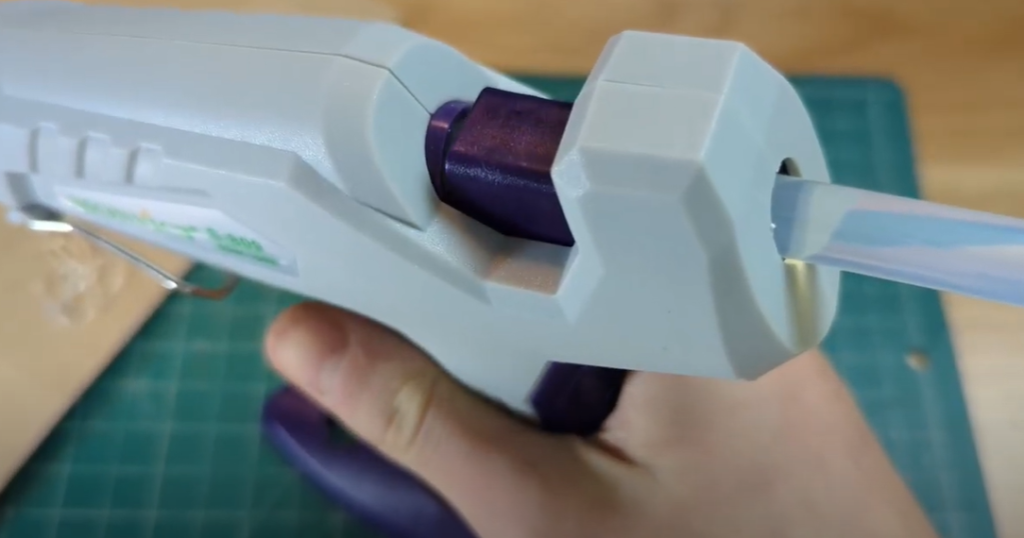
Blisters
Blisters are a common symptom of second-degree burns, including those potentially caused by hot glue guns. These burns affect both the epidermis and the top part of the dermis, leading to the formation of fluid-filled blisters. The skin beneath the blister will appear pink and moist, and the area is likely to be extremely painful due to the exposed nerve endings in the dermis. [3]
Pain management is also important, and over-the-counter pain medications can be helpful. However, if the burn is extensive, includes sensitive areas, involves large blisters, or shows any signs of infection such as increased redness, swelling, or pus, immediate professional medical help is needed. One key takeaway is that all burns, including those from hot glue guns, are serious injuries requiring appropriate care and, in some cases, professional medical attention.
Chemicals
While often overlooked, it’s important to note that glue sticks are consist of thermoplastic adhesive, which contains various chemicals. Although generally considered safe for use, these chemicals can potentially lead to health issues, especially when heated. They can release fumes that, when inhaled, may cause irritation to the respiratory system, manifested as coughing, wheezing, or even asthma-like symptoms in severe cases. [4] Prolonged or repeated exposure may lead to chronic respiratory issues. Moreover, the adhesive component of the glue can stick to the skin and cause skin irritation or allergic reactions.
In rare cases, certain chemicals present in the glue might even get absorbed through the skin, leading to systemic effects. It’s essential, therefore, to adopt safe and responsible practices when using a hot glue gun. These include ensuring good ventilation in the working area to disperse fumes, avoiding skin contact with the hot glue, and using personal protective equipment like gloves and safety glasses. If exposure does occur, immediate action should be taken, such as washing the skin with soap and water, rinsing the eyes with plenty of water, or seeking medical attention if symptoms persist or are severe.
Excessive Sweating
Excessive sweating, known medically as hyperhidrosis, can be an additional factor to consider when using a hot glue gun. The palms of the hands, in particular, are common areas for hyperhidrosis, and sweating can make it difficult to maintain a secure grip on the hot glue gun, increasing the risk of accidental burns or other injuries. Furthermore, sweat can potentially mix with the hot glue, causing it to spatter and potentially leading to burns. And if sweat drips onto the hot glue gun, it may cause the device to malfunction, presenting a potential electrical hazard.
To mitigate these risks, individuals suffering from hyperhidrosis should consider wearing gloves that provide both a good grip and protection from the hot glue. Additionally, the use of antiperspirants designed for the palms of the hands can help to reduce sweating. Regular breaks to wipe off sweat and the use of fans or air conditioning to cool the workspace can also be beneficial. As with all aspects of hot glue gun use, taking appropriate precautions is essential to ensure safety.
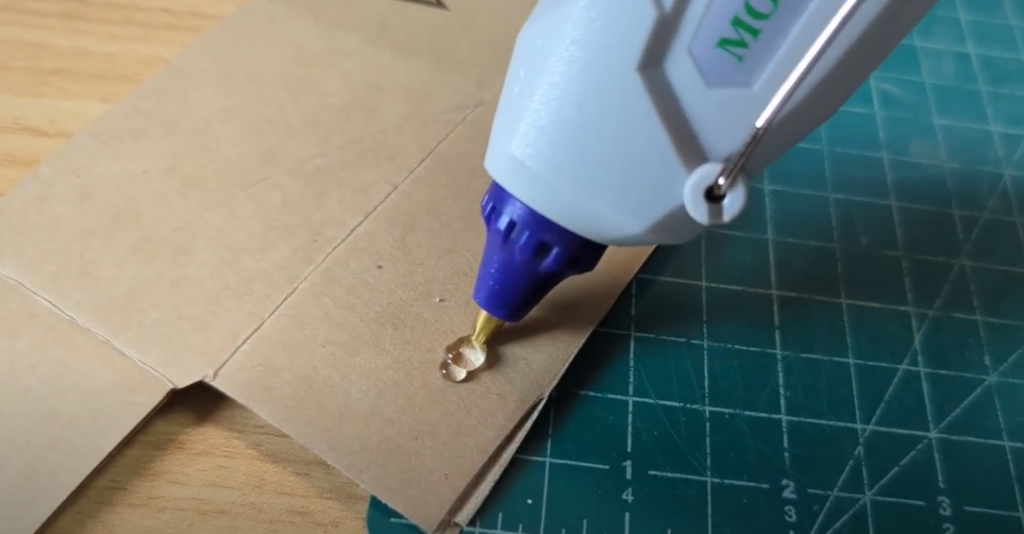
How To Treat A Hot Glue Burn of Skin?
When it comes to treating a hot glue burn on the skin, the first and most critical step is to cool the area immediately. This can be done by running cool (but not ice-cold) water over the burn for about 10-20 minutes. Avoid the use of ice or icy water, as extremely cold temperatures could exacerbate the burn injury. [5]
After cleaning, pat the area dry with a clean cloth or towel and apply a layer of antibiotic ointment if you’re not allergic. After applying pain relievers and soothing creams, it is essential to cover the burn with a sterile, non-stick bandage. Ensure that the dressing is changed daily, and the wound is cleaned with mild soap and water before reapplying the ointment and the bandage.
If you experience discomfort or pain from the burn, you can use over-the-counter pain relievers like ibuprofen or acetaminophen following the recommended dosage instructions. These medications can help reduce pain and inflammation, providing relief while the burn heals. Remember, do not pop or peel any blisters that form; they serve as a protective layer against infection. If, at any point, you observe signs of infection such as increased redness, swelling, or pus discharge, or if the burn does not seem to be healing, it’s imperative to seek professional medical help immediately.
In addition, if the burn is larger than three inches in diameter, or is located on sensitive areas such as the face, hands, feet, groin, or over a major joint, please promptly seek urgent medical care. It’s always better to err on the side of caution when it comes to burn injuries, given their potential for complications.
How to Treat a Burn on Finger from a Hot Glue Gun?
- Immediate Cooling: The first step after sustaining a burn from a hot melt glue gun on your finger is to cool the burn. This action aids in ceasing the burning process and offers initial relief from pain. Run cool (not cold) water over the burn for about 15 minutes. Try no to use very coldwater as this could potentially worsen the burn injury and damage your skin.
- Clean the Burn Area: Once the burn has been cooled, the next step is to cleanse the area. Use mild soap and water to gently clean the burn. This helps to prevent infection.
- Dry the Burn Area: Pat the burn area dry with a clean, soft cloth or towel. Ensure not to rub the burn area as this could cause irritation.
- Application of Antibiotic Ointment: If not allergic, apply a thin layer of an over-the-counter antibiotic ointment like Neosporin to the burn. This aids in protecting the area from infection and keeps it moist, which can help the healing process.
- Dressing the Burn: Cover the burn with a sterile non-stick bandage. This helps to keep the area clean and protects it from further injury. The dressing should be changed daily.
- Pain Management: If the burn is causing discomfort or pain, over-the-counter pain relievers such as ibuprofen or acetaminophen can be taken as per dosage instructions on the package.
- Blisters Management: Do not pop or peel any blisters that form. Blisters act as a natural barrier against infection.
- Monitoring for Infection: Keep a close eye on the burn for signs of infection. These can include increased redness, swelling, or pus discharge. If you observe any of these signs or if the burn does not seem to be healing, seek professional medical help immediately.
- Seeking Professional Help: If the burn is larger than three inches in diameter, or is located on sensitive areas such as the face, hands, feet, groin, buttocks, or over a major joint, seek immediate medical attention.
Remember, safety is paramount when using hot glue guns. Always use personal protective equipment and follow the manufacturer’s instructions to mitigate the risk of burns.
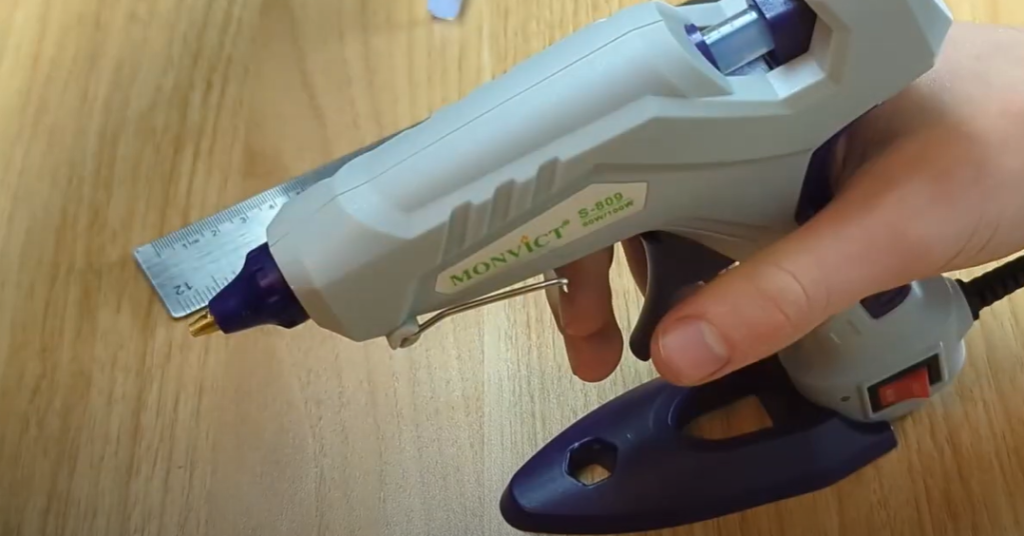
Safety measures to prevent burns
When using a hot glue gun, the main rules to ensure safety and prevent burns include:
- Personal Protective Equipment (PPE): Always wear appropriate PPE, which may include safety gloves and glasses. This can significantly reduce the risk of burns and eye damage.
- Supervision for Young Users: If a child is using a hot glue gun, ensure adult supervision at all times.
- Proper Handling: Hold the glue gun at the designated grip area to avoid accidental contact with the hot nozzle.
- Never Leave Unattended: Always turn off and unplug the glue gun when you’re not using it. Never leave a hot glue gun unattended.
- Proper Maintenance: Regularly check the glue gun for any damage or malfunction before use. If you notice any issues, do not use it.
- Use a Stand: Always place the glue gun on its stand when not in use to prevent the hot nozzle from touching surfaces.
- Avoid Direct Skin Contact with Hot Glue: Always be cautious while using the glue to avoid any direct contact with the skin.
Frequently Asked Questions
Should you pop a hot glue gun blister?
No, you should not pop a blister from a hot glue gun burn. Blisters act as a protective layer for the underlying skin and help prevent infection. Popping a blister could potentially expose the area to bacteria, leading to an infection. If a blister becomes too painful or impedes functionality, seek medical attention for safe management.
What do degree burns look like?
Burns can be categorized into three degrees, each with distinct characteristics:
- First-degree burns: This is the least severe type of burn affecting only the outer layer of the skin (epidermis). They may cause redness, minor inflammation or swelling, and pain, but no blisters. A typical example is a mild sunburn.
- Second-degree burns: These burns extend to the second layer of the skin (dermis) and often appear swollen and pink or red. They are characterized by blisters and can be extremely painful due to damage to nerve endings.
- Third-degree burns: The most severe form of burns, third-degree burns, damage all layers of the skin and underlying tissues. The affected area might appear white, charred, or blackened. Surprisingly, these burns may be painless at the site if nerve endings have been destroyed.

Do burn blisters leave scars?
Whether a burn blister leaves a scar largely depends on the severity and depth of the burn. First-degree burns rarely leave scars, while second-degree burns might result in scarring if they affect a significant layer of the dermis. Third-degree burns are likely to leave a scar as they damage all skin layers and underlying tissues. Proper wound care can help minimize scarring.
Why is my burn white?
A burn may appear white for a couple of reasons. In first-degree burns, the skin may turn white when pressure is applied. In more severe, third-degree burns, the skin can appear white or charred because the burn has penetrated all layers of the skin, damaging blood vessels, nerves, and even underlying tissues. It’s important to seek immediate medical attention for severe burns or if you’re unsure about the severity of a burn.
What are the other risks of using a hot glue gun?
In addition to causing burns, hot glue guns pose a number of other potential risks. These tools can cause fires if left unattended or placed near flammable materials. The hot glue can adhere to skin, fabric, and other surfaces, causing damage. If inhaled, the fumes from hot glue can cause respiratory irritation. Additionally, hot glue can cause eye injuries if it splatters. Always follow safety guidelines when using hot glue guns to minimize these risks.
Useful Video: New Hot Glue Gun? 3 Things You Must Know Before Using it! (and Avoid Clogging)
Conclusion
Using a hot glue gun can be a great tool for various crafts and DIY projects. However, it’s essential to exercise caution to prevent burns and other potential injuries. By wearing appropriate personal protective equipment, handling the tool properly, and never leaving it unattended, you can mitigate many of the risks associated with hot glue guns. If a burn does occur, it’s important to know how to correctly treat it and to seek medical attention if necessary. Remember, safety should always be your number one priority when using any tool.
References:
- https://hhma.org/healthadvisor/aha-burnther-crs/
- https://craftsrider.com/is-hot-glue-toxic-to-humans/
- https://stanfordhealthcare.org/medical-conditions/skin-hair-and-nails/burns/stages.html
- https://ourecofriendlylife.com/is-hot-glue-non-toxic/
- https://www.wikihow.com/Treat-a-Hot-Glue-Burn

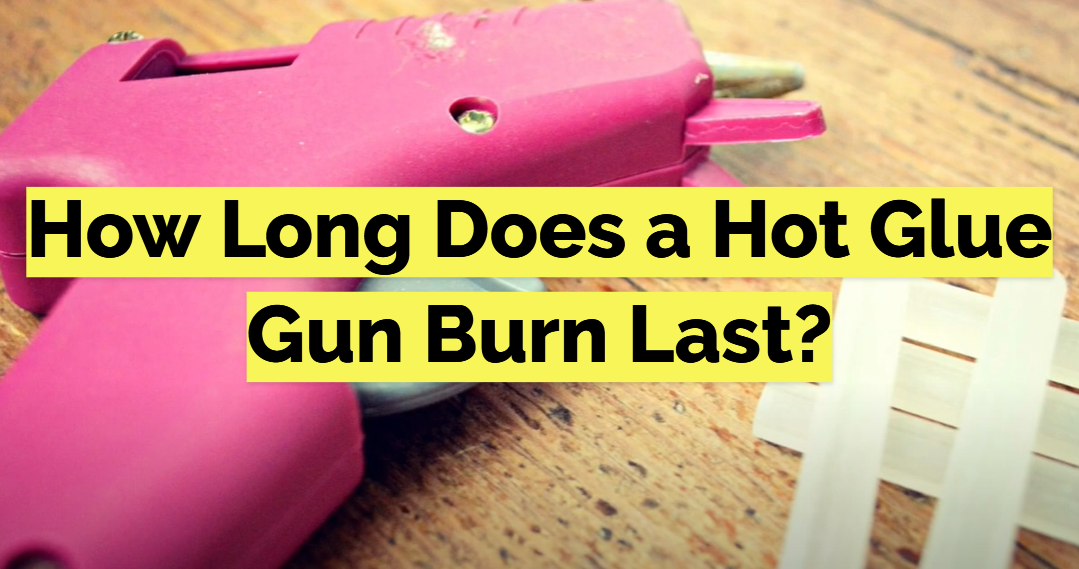
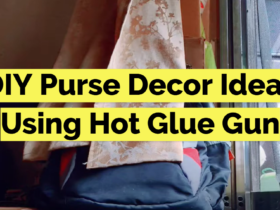

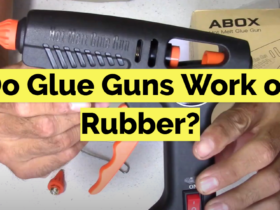
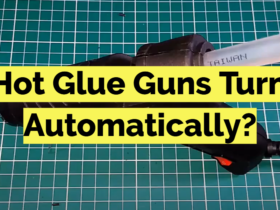
Leave a Reply